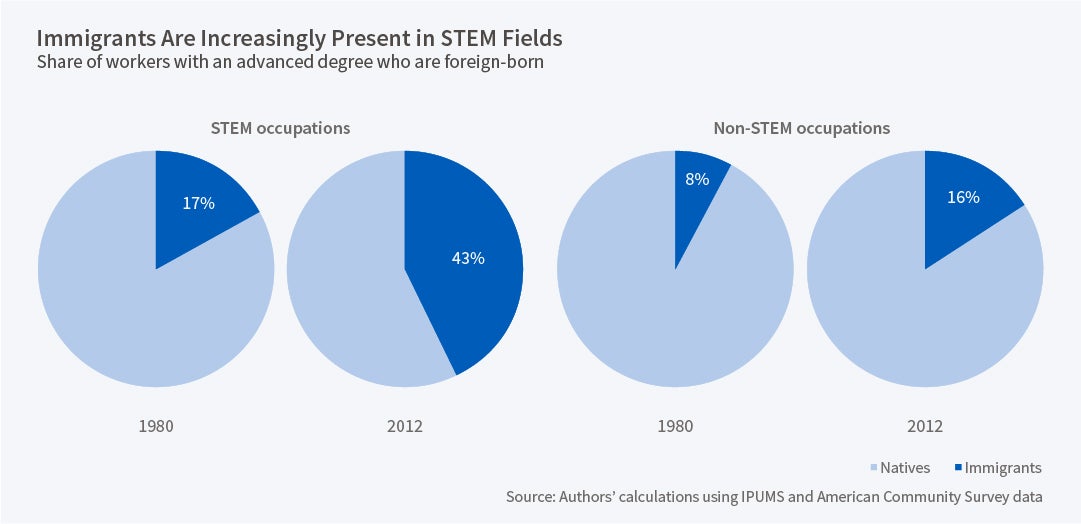Immigrants Play a Key Role in STEM Fields
Immigrants account for more than half of all STEM workers with Ph.D.s and are especially prevalent in software programming and other computer-related jobs.
Immigrants hold a disproportionate share of jobs in science, technology, engineering, and math (STEM) occupations in the United States, meaning that they are important for maintaining the nation's preeminence in advanced industries, according to a new study by Gordon H. Hanson and Matthew J. Slaughter. Their results are reported in High-Skilled Immigration and the Rise of STEM Occupations in U.S. Employment (NBER Working Paper 22623).
In 2013, foreign-born workers accounted for 19.2 percent of STEM workers with a bachelor's degree, 40.7 percent of those with a master's degree, and more than half—54.5 percent—of those with a Ph.D. Most of the foreign-born workers with advanced degrees obtained those degrees in the U.S. After completing their schooling, they chose to remain in the country rather than return to their home countries. They are particularly prevalent in software programming and other computer-related jobs.
The authors compare the wages of native-born and immigrant men, a standard practice in the literature on this topic. Immigrants earn less than native-born workers across most occupations, even after controlling for worker attributes such as age, education, and gender. But in STEM fields this pattern is weaker and may even reverse. In 1990, native-born STEM workers earned more than immigrants both for those with advanced degrees and for those whose final degree was a bachelor's. In 2012, immigrant STEM workers earned more than their native counterparts.
The researchers also investigate how the wage gap between immigrant and native-born STEM workers varies with the number of years since immigration. For the period 2010-12, immigrant STEM workers who had been in the U.S. for less than five years earned on average 5.7 percent less than their native-born counterparts. However, immigrant STEM workers who had been in the U.S. for at least six years earned more than their native-born counterparts. The researchers point out that these wage patterns cast doubt on con-cerns that visa programs like the H-1B program, which allows firms to bring skilled workers to the United States, have undercut the earnings of domestic workers, at least in the STEM fields.
Immigration of STEM workers may be an important input to U.S. productivity growth. The researchers write that "In modern growth theory, the share of workers specialized in R&D plays a role in setting the pace of long-run growth. Because high-skilled immigrants are drawn to STEM fields, they are likely to be inputs into U.S. innovation." The researchers point out that an immigrant working in a STEM field is more likely to obtain a patent than a native-born worker in a similar field, and is even more likely to get a patent that is commercialized.
—Laurent Belsie



